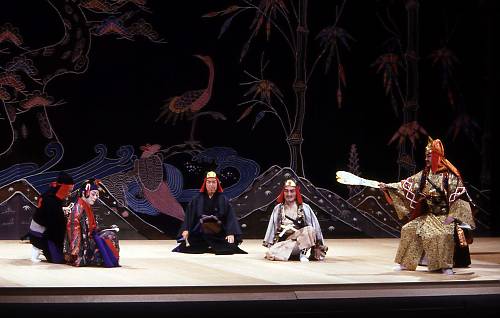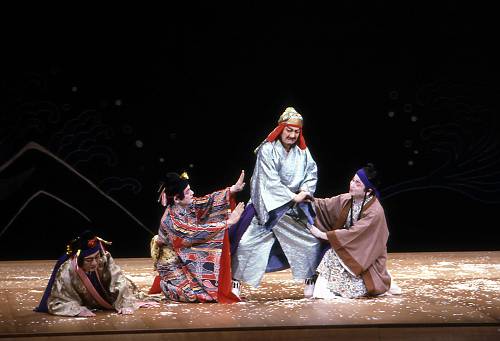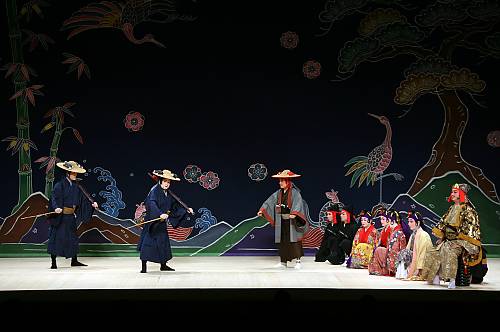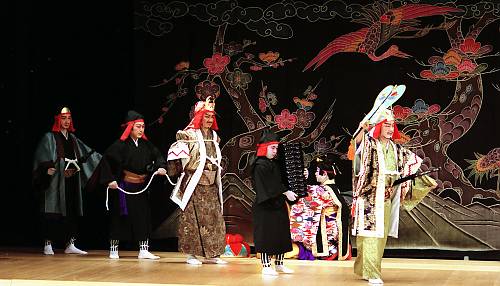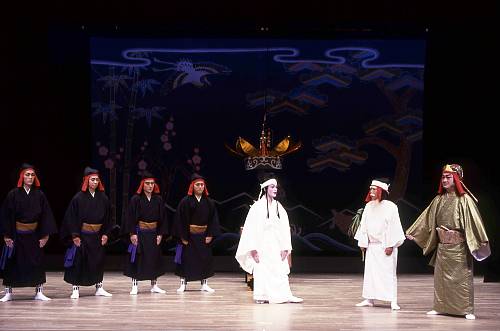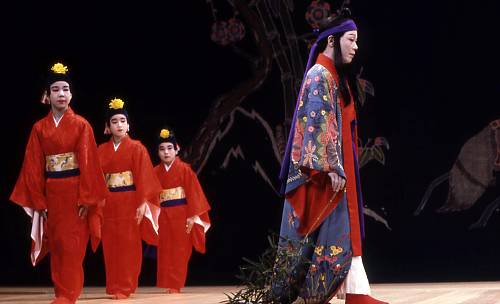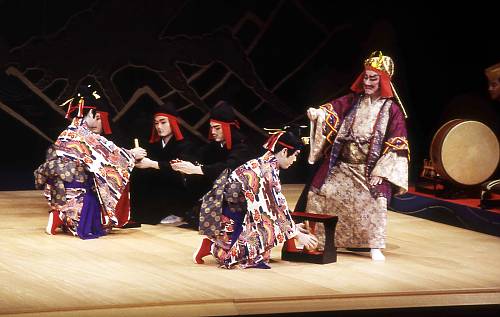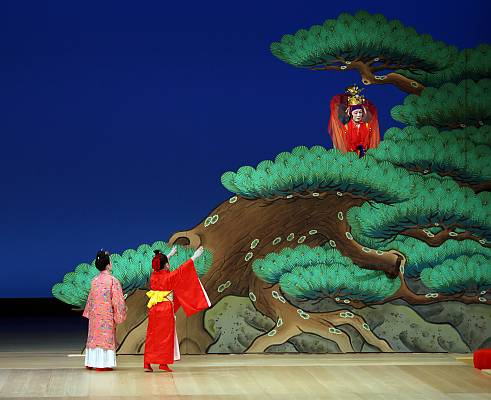Kumiodori, traditional Okinawan musical theatre
Inscribed in 2010 (5.COM) on the Representative List of the Intangible Cultural Heritage of Humanity

Kumiodori is a Japanese performing art found on the Okinawa islands. It is based upon traditional Okinawan music and dance, but also incorporates elements from mainland Japan, such as Nogaku or Kabuki, as well as from China. Kumiodori dramas recount local historical events or legends, accompanied by a traditional three-stringed instrument. The phrases have a particular rhythm, based upon traditional poetry and the distinctive intonation of the Ryukyu scale, and are performed in the ancient language of Okinawa. The physical movements of the performers evoke those of a pythoness at traditional rituals of ancient Okinawa. All parts are performed by male actors, and techniques unique to Okinawa can be seen in the methods of hair-dressing, costumes and decorations used on stage. The need to strengthen transmission motivated Kumiodori performers to establish the Traditional Kumiodori Preservation Society, which trains performers, revives discontinued dramas, and carries out performances on a regular basis. In addition to classical works that emphasize themes of loyalty and filial duty, new dramas have been produced with modern themes and choreography, but retaining the traditional Kumiodori style. Kumiodori plays a central role in preserving ancient Okinawan vocabulary as well as transmitting literature, performing arts, history and ethics.
